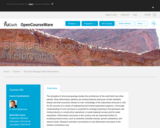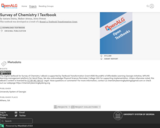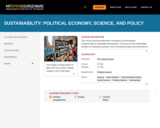Long Description:
Welcome to Astronomy, an OpenStax resource. This textbook was written to increase student access to high-quality learning materials, maintaining highest standards of academic rigor at little to no cost. About OpenStax OpenStax is a nonprofit based at Rice University, and it’s our mission to improve student access to education. Our first openly licensed college textbook was published in 2012 and our library has since scaled to over 25 books for college and AP® courses used by hundreds of thousands of students. OpenStax Tutor, our low-cost personalized learning tool, is being used in college courses throughout the country. Through our partnerships with philanthropic foundations and our alliance with other educational resource organizations, OpenStax is breaking down the most common barriers to learning and empowering students and instructors to succeed. About OpenStax resources Customization Astronomy is licensed under a Creative Commons Attribution 4.0 International (CC BY) license, which means that you can distribute, remix, and build upon the content, as long as you provide attribution to OpenStax and its content contributors. Because our books are openly licensed, you are free to use the entire book or pick and choose the sections that are most relevant to the needs of your course. Feel free to remix the content by assigning your students certain chapters and sections in your syllabus, in the order that you prefer. You can even provide a direct link in your syllabus to the sections in the web view of your book. Instructors also have the option of creating a customized version of their OpenStax book. The custom version can be made available to students in low-cost print or digital form through their campus bookstore. Visit your book page on OpenStax.org for more information. Errata All OpenStax textbooks undergo a rigorous review process. However, like any professional-grade textbook, errors sometimes occur. Since our books are web based, we can make updates periodically when deemed pedagogically necessary. If you have a correction to suggest, submit it through the link on your book page on OpenStax.org. Subject-matter experts review all errata suggestions. OpenStax is committed to remaining transparent about all updates, so you will also find a list of past errata changes on your book page on OpenStax.org. Format You can access this textbook for free in web view or PDF through OpenStax.org, and for a low cost in print. About Astronomy Astronomy is written in clear non-technical language, with the occasional touch of humor and a wide range of clarifying illustrations. It has many analogies drawn from everyday life to help non-science majors appreciate, on their own terms, what our modern exploration of the universe is revealing. The book can be used for either a one-semester or two-semester introductory course (bear in mind, you can customize your version and include only those chapters or sections you will be teaching.) It is made available free of charge in electronic form (and low cost in printed form) to students around the world. If you have ever thrown up your hands in despair over the spiraling cost of astronomy textbooks, you owe your students a good look at this one. Currency and accuracy Astronomy has information and images from the New Horizons exploration of Pluto, the discovery of gravitational waves, the Rosetta Mission to Comet C-G, and many other recent projects in astronomy. The discussion of exoplanets has been updated with recent information—indicating not just individual examples, but trends in what sorts of planets seem to be most common. Black holes receive their own chapter, and the role of supermassive black holes in active galaxies and galaxy evolution is clearly explained. Chapters have been reviewed by subject-matter experts for accuracy and currency. Flexibility Because there are many different ways to teach introductory astronomy, we have made the text as flexible as we could. Math examples are shown in separate sections throughout, so that you can leave out the math or require it as you deem best. Each section of a chapter treats a different aspect of the topic being covered; a number of sections could be omitted in shorter overview courses and can be included where you need more depth. And, as we have already discussed, you can customize the book in a variety of ways that have never been possible in traditional textbooks. Student-centered focus This book is written to help students understand the big picture rather than get lost in random factoids to memorize. The language is accessible and inviting. Helpful diagrams and summary tables review and encapsulate the ideas being covered. Each chapter contains interactive group activities you can assign to help students work in teams and pool their knowledge. Interactive online resources Interesting “Links to Learning” are scattered throughout the chapters, which direct students to online animations, short videos, or enrichment readings to enhance their learning. Also, the resources listed at the end of each chapter include links to websites and other useful educational videos. Feature boxes that help students think outside the box A variety of feature boxes within the chapters connect astronomy to the students’ other subjects and humanize the face of astronomy by highlighting the lives of the men and women who have been key to its progress. Besides the math examples that we’ve already mentioned, the boxes include: Making Connections. This feature connects the chapter topic to students’ experiences with other fields, from poetry to engineering, popular culture, and natural disasters. Voyagers in Astronomy. This feature presents brief and engaging biographies of the people behind historically significant discoveries, as well as emerging research. Astronomy Basics. This feature explains basic science concepts that we often (incorrectly) assume students know from earlier classes. Seeing for Yourself. This feature provides practical ways that students can make astronomical observations on their own. End-of-chapter materials to extend students’ learning Chapter Summaries. Summaries give the gist of each section for easy review. For Further Exploration. This section offers a list of suggested articles, websites, and videos so students can delve into topics of interest, whether for their own learning, for homework, extra credit, or papers. Review Questions. Review questions allow students to show you (or themselves) how well they understood the chapter. Thought Questions. Thought questions help students assess their learning by asking for critical reflection on principles or ideas in the chapter. Figuring For Yourself. Mathematical questions, using only basic algebra and arithmetic, allow students to apply the math principles given in the example boxes throughout the chapter. Collaborative Group Activities. This section suggests ideas for group discussion, research, or reports. Beautiful art program Our comprehensive art program is designed to enhance students’ understanding of concepts through clear and effective illustrations, diagrams, and photographs. Here are a few examples. How a Pulsar Beam Sweeps over Earth. Structure of the Milky Way Galaxy. Two Aspects of Plate Tectonics. Pluto Close Up. Additional resources Student and instructor resources We’ve compiled additional resources for both students and instructors, including Getting Started Guides, PowerPoint slides, and an instructor answer guide. Instructor resources require a verified instructor account, which you can apply for when you log in or create your account on OpenStax.org. Take advantage of these resources to supplement your OpenStax book. Community Hubs OpenStax partners with the Institute for the Study of Knowledge Management in Education (ISKME) to offer Community Hubs on OER Commons – a platform for instructors to share community-created resources that support OpenStax books, free of charge. Through our Community Hubs, instructors can upload their own materials or download resources to use in their own courses, including additional ancillaries, teaching material, multimedia, and relevant course content. We encourage instructors to join the hubs for the subjects most relevant to your teaching and research as an opportunity both to enrich your courses and to engage with other faculty. To reach the Community Hubs, visit https://www.oercommons.org/hubs/OpenStax. Partner resources OpenStax Partners are our allies in the mission to make high-quality learning materials affordable and accessible to students and instructors everywhere. Their tools integrate seamlessly with our OpenStax titles at a low cost. To access the partner resources for your text, visit your book page on OpenStax.org. About the authors Senior contributing authors Andrew Fraknoi, Foothill College Andrew Fraknoi is Chair of the Astronomy Department at Foothill College and served as the Executive Director of the Astronomical Society of the Pacific from 1978–1992. His work with the society included editing Mercury Magazine, Universe in the Classroom, and Astronomy Beat. He’s taught at San Francisco State University, Canada College, and the University of California Extension. He is editor/co-author of The Universe at Your Fingertips 2.0, a collection of teaching activities, and co-author of Solar Science, a book for middle-school teachers. He was co-author of a syndicated newspaper column on astronomy, and appears regularly on local and national radio. With Sidney Wolff, he was founder of Astronomy Education Review. He serves on the Board of Trustees of the SETI Institute and on the Lick Observatory Council. In addition, he has organized six national symposia on teaching introductory astronomy. He received the Klumpke-Roberts Prize of the ASP, the Gemant Award of the American Institute of Physics, and the Faraday Award of the NSTA. David Morrison, National Aeronautics and Space Administration David Morrison is a Senior Scientist at NASA Ames Research Center. He received his PhD in astronomy from Harvard, where he was one of Carl Sagan’s graduate students. He is a founder of the field of astrobiology and is known for research on small bodies in the solar system. He spent 17 years at University of Hawaii’s Institute for Astronomy and the Department of Physics and Astronomy. He was Director of the IRTF at Mauna Kea Observatory. Morrison has held senior NASA positions including Chief of the Ames Space Science Division and founding Director of the Lunar Science Institute. He’s been on science teams for the Voyager, Galileo, and Kepler missions. Morrison received NASA Outstanding Leadership Medals and the NASA Exceptional Achievement Medal. He was awarded the AAS Carl Sagan medal and the ASP Klumpke-Roberts prize. Committed to the struggle against pseudoscience, he serves as Contributing Editor of Skeptical Inquirer and on the Advisory Council of the National Center for Science Education. Sidney C. Wolff, National Optical Astronomy Observatories (Emeritus) After receiving her PhD from the UC Berkeley, Dr. Wolff was involved with the astronomical development of Mauna Kea. In 1984, she became the Director of Kitt Peak National Observatory, and was director of National Optical Astronomy Observatory. Most recently, she led the design and development of the 8.4-meter Large Synoptic Survey Telescope. Dr. Wolff has published over ninety refereed papers on star formation and stellar atmospheres. She has served as President of the AAS and the ASP. Her recently published book, The Boundless Universe: Astronomy in the New Age of Discovery, won the 2016 IPPY (Independent Publisher Book Awards) Silver Medal in Science. All three senior contributing authors have received the Education Prize of the American Astronomical Society and have had an asteroid named after them by the International Astronomical Union. They have worked together on a series of astronomy textbooks over the past two decades. Contributing authors John Beck, Stanford University Susan D. Benecchi, Planetary Science Institute John Bochanski, Rider University Howard Bond, Pennsylvania State University, Emeritus, Space Telescope Science Institute Jennifer Carson, Occidental College Bryan Dunne, University of Illinois at Urbana-Champaign Martin Elvis, Harvard-Smithsonian Center for Astrophysics Debra Fischer, Yale University Heidi Hammel, Association of Universities for Research in Astronomy Tori Hoehler, NASA Ames Research Center Douglas Ingram, Texas Christian University Steven Kawaler, Iowa State University Lloyd Knox, University of California, Davis Mark Krumholz, Australian National University James Lowenthal, Smith College Siobahn Morgan, University of Northern Iowa Daniel Perley, California Institute of Technology Claire Raftery, National Solar Observatory Deborah Scherrer, retired, Stanford University Phillip Scherrer, Stanford University Sanjoy Som, Blue Marble Space Institute of Science, NASA Ames Research Center Wes Tobin, Indiana University East William H. Waller, retired, Tufts University, Rockport (MA) Public Schools Todd Young, Wayne State College Reviewers Elisabeth R. Adams, Planetary Science Institute Alfred N. Alaniz, San Antonio College Charles Allison, Texas A&M University–Kingsville Douglas Arion, Carthage College Timothy Barker, Wheaton College Marshall Bartlett, The Hockaday School Charles Benesh, Wesleyan College Gerald B. Cleaver, Baylor University Kristi Concannon, King’s College Anthony Crider, Elon University Scott Engle, Villanova University Matthew Fillingim, University of California, Berkeley Robert Fisher, University of Massachusetts, Dartmouth Carrie Fitzgerald, Montgomery College Christopher Fuse, Rollins College Shila Garg, Emeritus, The College of Wooster Richard Gelderman, Western Kentucky University Lee Hartman, University of Michigan Beth Hufnagel, Anne Arundel Community College Francine Jackson, Brown University Joseph Jensen, Utah Valley University John Kielkopf, University of Louisville James C. Lombardi, Jr., Allegheny College Amy Lovell, Agnes Scott College Charles Niederriter, Gustavus Adolphus College Richard Olenick, University of Dallas Matthew Olmstead, King’s College Zoran Pazameta, Eastern Connecticut State University David Quesada, Saint Thomas University Valerie A. Rapson, Dudley Observatory Joseph Ribaudo, Utica College Dean Richardson, Xavier University of Louisiana Andrew Rivers, Northwestern University Marc Sher, College of William & Mary Christopher Sirola, University of Southern Mississippi Ran Sivron, Baker University J. Allyn Smith, Austin Peay State University Jason Smolinski, Calvin College Michele Thornley, Bucknell University Richard Webb, Union College Terry Willis, Chesapeake College David Wood, San Antonio College Jeremy Wood, Hazard Community and Technical College Jared Workman, Colorado Mesa University Kaisa E. Young, Nicholls State University
Word Count: 214753
(Note: This resource's metadata has been created automatically by reformatting and/or combining the information that the author initially provided as part of a bulk import process.)







